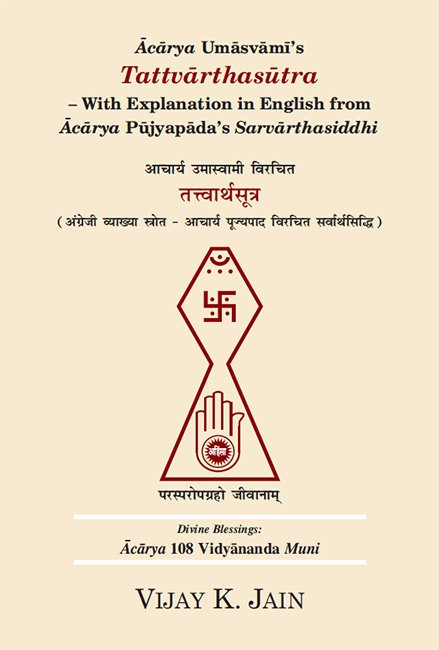Tattvartha Sutra (with commentary)
by Vijay K. Jain | 2018 | 130,587 words | ISBN-10: 8193272625 | ISBN-13: 9788193272626
This page describes various kinds of disposition (bhava) which is verse 2.2 of the English translation of the Tattvartha Sutra which represents the essentials of Jainism and Jain dharma and deals with the basics on Karma, Cosmology, Ethics, Celestial beings and Liberation. The Tattvarthasutra is authorative among both Digambara and Shvetambara. This is verse 2 of the chapter Category of the Living and includes an extensive commentary.
Verse 2.2 - Various kinds of disposition (bhāva)
Sanskrit text, Unicode transliteration and English translation of Tattvartha sūtra 2.2:
द्विनवाष्टादशैकविंशतित्रिभेदाः यथाक्रमम् ॥ २.२ ॥
dvinavāṣṭādaśaikaviṃśatitribhedāḥ yathākramam || 2.2 ||
These are of two, nine, eighteen, twenty-one and three kinds, respectively. (2)
Hindi Anvayarth:
अन्वयार्थ: उपरोक्त पाँच भाव [यथाक्रमम्] क्रमशः [द्वि नव अष्टादश एकविंशति त्रिभेदाः] दो, नव, अट्ठारह, इक्कीस और तीन भेद वाले हैं।
Anvayartha: uparokta pamca bhava [yathakramam] kramashah [dvi nava ashtadasha ekavimshati tribhedah] do, nava, attharaha, ikkisa aura tina bheda vale haim |
Explanation in English from Ācārya Pūjyapāda’s Sarvārthasiddhi:
The subsidential (aupaśamika) disposition (bhāva) is of two kinds. The destructional (kṣāyika) disposition is of nine kinds. The destruction-cum-subsidential (kṣāyopaśamika) disposition is of eighteen kinds. The disposition (bhāva) due to the fruition of karmas–audāyika–is of twenty-one kinds. And the disposition (bhāva) due to inherent nature of the soul–pāriṇāmika–is of three kinds.
